Day I
Dr. Craig Dahlgren and I coordinated and led a team of young, excited Bahamian marine researchers on an expedition within the Joulter Cays on Andros, The Bahamas. Other team members included Nadia Lockhart from Atlantis, Paradise Island Marine Aquarium Operations; Lakeshia Anderson, Lindy Knowles, and Krista Sherman from The Bahamas National Trust; and Agnessa Lundy from The Nature Conservancy (photo 1). Once the team left the port at Nassau Harbour aboard the Cat Ppalu, Dr. Dahlgren gave an overview of the plan of action for the week (photo 2). The assessment team was divided into 3 groups: benthic, corals, and fish. The team members then began discussing among themselves each group’s responsibilities while enjoying the scrumptious cooking done presented the Cat Ppalu’s chef.
Photo 1. The Joulter Cays expedition team aboard the Cat Ppalu. Photo courtesy of the Cat Ppalu staff.
Day 2-5
The team was very fortunate to experience clear skies and calm water throughout the entire trip. Each morning the team would get up, eat breakfast, assemble diving gear, (photo 3), and then…get wet! (photo 4)
Photo 3. Ms. Burrows preparing and assembling dive gear. Photo courtesy of Lindy Knowles, The Bahamas National Trust.
Photo 4. Ms. Lundy entering the water from off the Cat Ppalu to begin her benthic assessments. Photo courtesy of Lindy Knowles, The Bahamas National Trust.
The main methods used to collect data included the use of transects, quadrats, and performing visual observations (photo 5). Coral assessments primarily involved looking and recording along a 10m transect line including coral size (≥ 4cm), species type, signs of threats (bleaching, predation, etc.), and coral mortality. Fish assessments involved swimming along a transect line using a T-bar 1m wide, then counting and recording the size, abundance, and type of fish species viewed within the 1m range. Benthic assessments were done by recording macroalgae and substrate type as well as counting coral recruits (≤2cm) within a 25 cm × 25 cm quadrat, placed at 2m intervals along the transect line.
Photo 5. Nadia conducting fish assessments. Photo courtesy of Lindy Knowles, The Bahamas National Trust.
Dr. Dahlgren, Ms. Burrows, and Mr. Knowles also kayaked within one of the tidal creeks, to briefly assess the mangroves (photo 6), fish, and benthic habitats. Observed were healthy sea grass beds and mangrove populations occupied by adult and juvenile snappers (photo 7).
Photo 6. Red mangroves within a tidal creek around the Joulter Cays. Photo courtesy of Felicity Burrows, The Nature Conservancy.
Photo 7. Snappers found among red mangroves roots. Photo courtesy of Felicity Burrows, The Nature Conservancy.
During the team’s exploration of the coral reefs and marine environments of the northern area of the Andros barrier reef, they discovered a great range in coral reef condition, ranging from reefs that showed signs of degradation and those that contained healthy stands of rare corals and abundant fish populations. Some of the more pristine reefs were close to the Joulter Cays, where stands of elkhorn, staghorn, and mounding corals were extensive (photo 8). Both elkhorn and staghorn corals are considered endangered throughout the Caribbean region and are threatened by various human impacts. Coral reefs off the Joulter Cays also had an abundance of grazing parrotfish and predators, including snappers and groupers. Sites north and south of the Joulter Cays were more degraded, with less living coral and fewer fish.
Photo 8. Elkhorn coral. Photo courtesy of Felicity Burrows, The Nature Conservancy.
There was extensive evidence of fishing at these sites as well as evidence where corals suffered large-scale die-off. These reefs had little living coral and were overgrown with seaweeds. Based on our preliminary findings, recommendations have been made to protect some of the more pristine reefs that still have healthy fish and coral populations. These recommendations must be combined with input from other sources, including people who use the area for fishing and recreation, to determine how the health of the area may be maintained.

